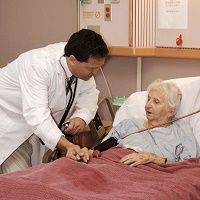Article
Manage Pain in the ER with Just One Simple Question
Author(s):
Patients are often asked their level of pain on a scale of 0 to 10, but a new study suggests this may not be the most efficient way to distribute the appropriate dosage of drugs.

Patients are often asked their level of pain on a scale of 0 to 10, but a new study suggests this may not be the most efficient way to distribute the appropriate dosage of drugs.
“Do you want more pain medication?” proved to be the only question needed in order to achieve satisfactory pain control, according Andrew Chang, MD, MS, the study’s lead author.
“Our pain protocol is a departure from the more traditional ways of assessing pain relief, which typically use the visual analog scale or the numerical rating scale,” said Chang, a physician in the Department of Emergency Medicine at Montefiore Medical Center in Bronx, NY, in a news release.
One of the challenges associated with emergency room care is individualized treatment. The researchers recognized that pain perception is subjective, which makes it difficult to score numerically.
The team evaluated a total of 207 patients — ages 21 to 64 – who were experiencing acute, severe pain for less than 7 days between June 2013 and April 2014. Each patient started off with a 1 milligram (mg) dose of intravenous (IV) hydromorphone. After every 30 minutes they were asked if they wanted more. If the answer was yes, the patient was provided with an additional 1 mg dose. This process continued for no more than 4 hours.
“Instead, our use of a non-numerical, simple yes/no question offers patients the ability to decide for themselves whether their pain is adequately controlled and allows them to balance pain relief against medication side effects such as nausea and drowsiness,” Chang said.
According to the results published in Annals of Emergency Medicine, every patient except for 2 reported satisfactory pain control with 2 to 4 hours. The final amounts of IV hydromorphone given were as follows:
- 114 patients: 1 mg (the initial dose)
- 78 patients: 2 mg
- 9 patients: 3 mg
- 6 patients: 4 mg
The researchers revealed that 67% of the patients were very satisfied with their treatment and 29% were satisfied.
“Our simple and easy to remember ‘1 + 1 + 1 + 1’ protocol holds promise for safely providing adequate pain relief to patients with acute severe pain,” Chang concluded.





